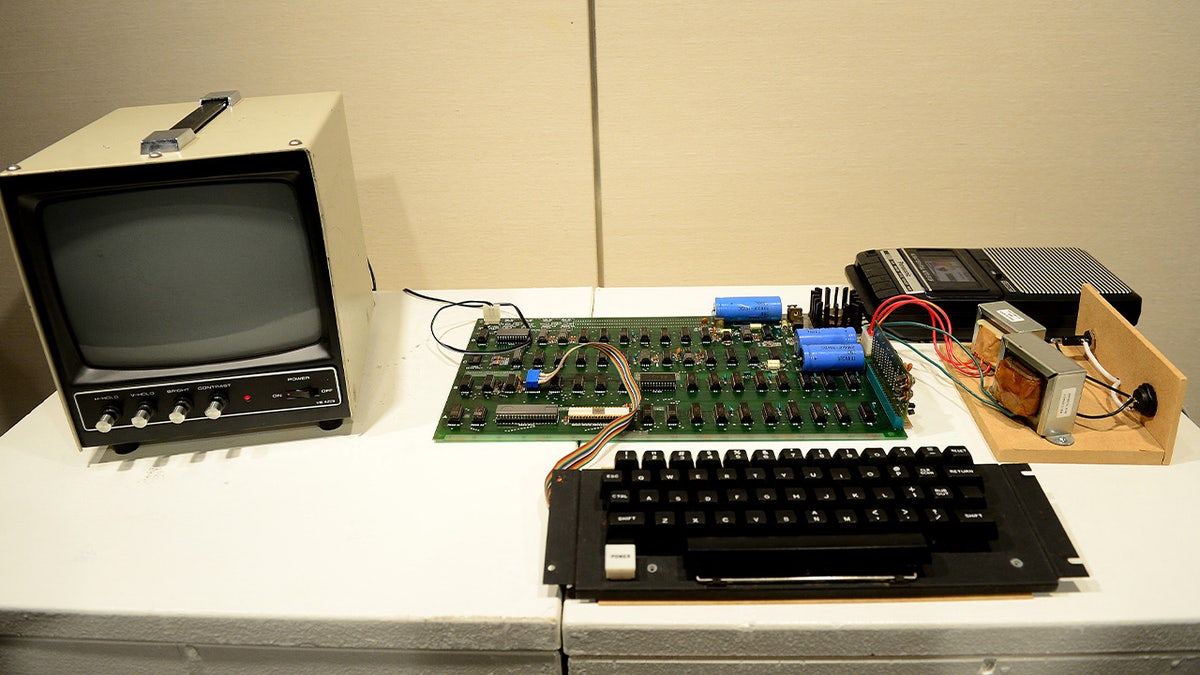Fox News Flash top headlines for March 4
Fox News Flash top headlines are here. Check out what's clicking on Foxnews.com.
A new computer is shiny and fresh — no folders full of random junk, crud in the keyboard or lagging when you try to watch a video or join a meeting.
Then life, and time, happens, and things slow down. Before you toss your computer into the junk pile, consider a little TLC. Your wallet will thank you.
Join 509K smart folks who get my free daily tech newsletter, The Current.
Your browser is one of the biggest culprits
Tab hoarders, I’m talking to you. Once you’re done with an article, site, or whatever, remove it.
1-MINUTE TECH CHANGES FOR MORE PRIVACY
Pro tip: Press Ctrl + W on Windows or Cmd + W on Mac to close the tab you're in. If you’re 25 tabs in, hold down Ctrl (Windows) or Cmd (Mac) and click on multiple tabs to select them all at once. Now hit Ctrl + W or Cmd + W to make them all vanish.
Now let’s look into settings for a little extra help. Hardware acceleration is the term for speeding up your browser using the hardware available — memory, processor and whatever graphics card you've installed. Most browsers offer this helpful little tweak.
- In Chrome’s settings, it's under the System tab.
- In Microsoft Edge’s settings, it's under System and Performance.
- In Firefox, you'll find it on the General tab. It's called "recommended performance settings" here.
If you use Safari on a Mac, Apple’s already switched on hardware acceleration.

(iStock)
Clear the clutter
I’m willing to bet your computer is full of files you don’t need anymore. They’re eating up space, which slows down almost everything you do. Here’s a simple place to start.
- Empty the Recycle Bin. When you delete a file, it goes to the Recycle Bin, waiting for you to take more permanent action. To get them out of purgatory, right-click on your Recycle Bin (Trash can on a Mac) and delete those files.
- Clear temporary files. These are created to help apps or processes go off without a hitch — or to help with transferring data and other processes. Over time, they take up a lot of space.
- On Windows: Open your C: drive and select the Windows folder, then Temp (C:\Windows\Temp). Press Ctrl + A to select everything, then hit Delete.
- On a Mac, go to Finder, then Go > Go to Folder. You should see ~/Library/Caches/. All temporary files will open in a new window. Delete them, then empty your trash can.
Be picky about what gets priority
AI TECHNOLOGY COULD HELP US, ALLIES MONITOR CHINA'S TAIWAN INVASION INTENTIONS
A classic problem with older computers: The startup process takes forever. We can’t fix all of that in one go, but adjusting what starts each time you boot up does make a difference.

(Photo by EMMANUEL DUNAND/AFP via Getty Images)
Here’s how to see which apps load during Windows startup:
- Click on the Start menu.
- Select Settings (cog icon) and click on Apps.
- In the left menu, click on Startup. It should be the last option.
The Startup panel displays all the apps installed on your machine. If Windows has measured the impact of that app on your PC, you will see a rating next to it. Options include No impact, Low impact, Medium impact, and High impact.
An app with a high impact can slow down your startup time. Go through the list and determine which apps you don’t need immediately after startup. Toggle each slider next to the app to turn it on or off.
AI’S BIGGEST IMPACT: WHICH SECTORS HAVE BENEFITED MOST AS JOB SECURITY REMAINS A VITAL CONCERN
Pro tip: Filter apps by impact.
On a Mac:
- Click on the Apple menu and navigate to System Preferences.
- Click on Users & Groups.
- Select your User Account, then click Login Items on the top right.
Here, you’ll see a list of the applications that open automatically when you log in.
To prevent an app from running automatically, click Remove a login item. Then select the app’s name you want to block and click the Remove button below the list. You can use the checkbox to hide items you want to launch. To add a new item, hit the plus symbol under the list and find it on your computer.

(iStock)
Keep your tech-know going
My popular podcast is called "Kim Komando Today." It’s a solid 30 minutes of tech news, tips, and callers with tech questions like you from all over the country. Search for it wherever you get your podcasts. For your convenience, hit the link below for a recent episode.
PODCAST PICK: Spy satellites are watching you
Yep, they're not just looking at the military — we've got the details. Plus, a massive cellular outage across the U.S., Google pauses Gemini's image generator and an Oklahoma man hacks a government auction website.
Check out my podcast "Kim Komando Today" on Apple, Google Podcasts, Spotify, or your favorite podcast player.
CLICK HERE TO GET THE FOX NEWS APP
Listen to the podcast here or wherever you get your podcasts. Just search for my last name, "Komando."
Sound like a tech pro, even if you’re not! Award-winning popular host Kim Komando is your secret weapon. Listen on 425+ radio stations or get the podcast. And join over 400,000 people who get her free 5-minute daily email newsletter.
Copyright 2024, WestStar Multimedia Entertainment. All rights reserved.





















